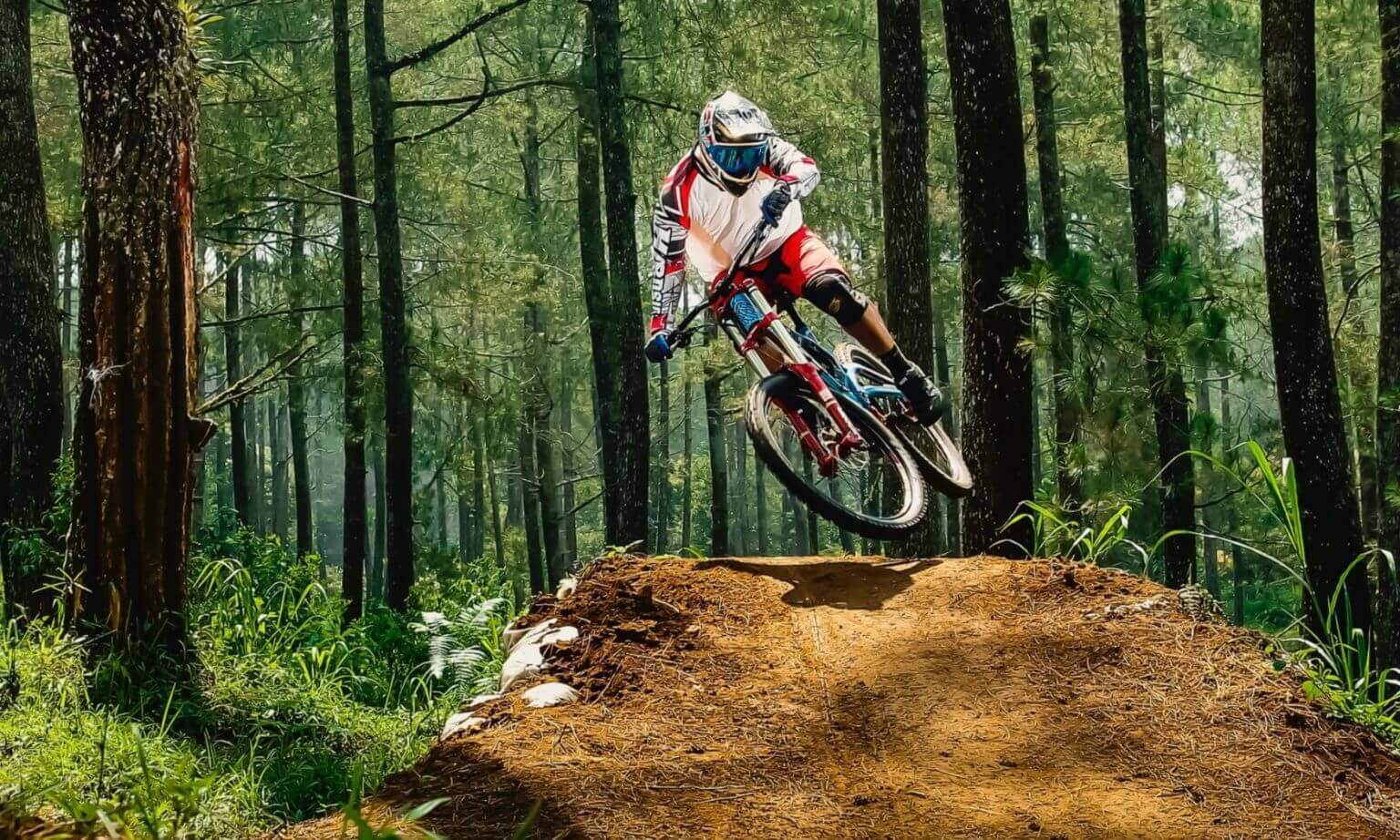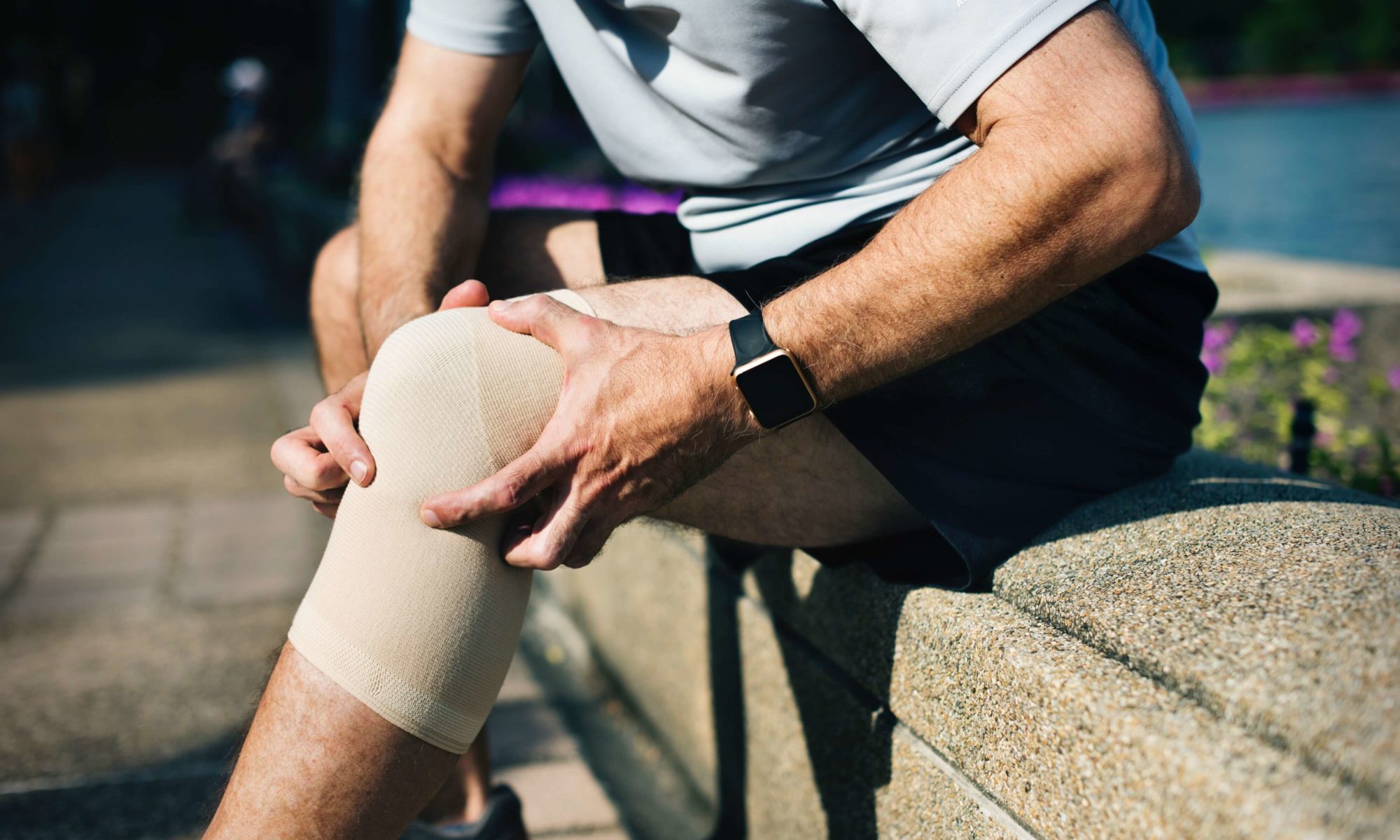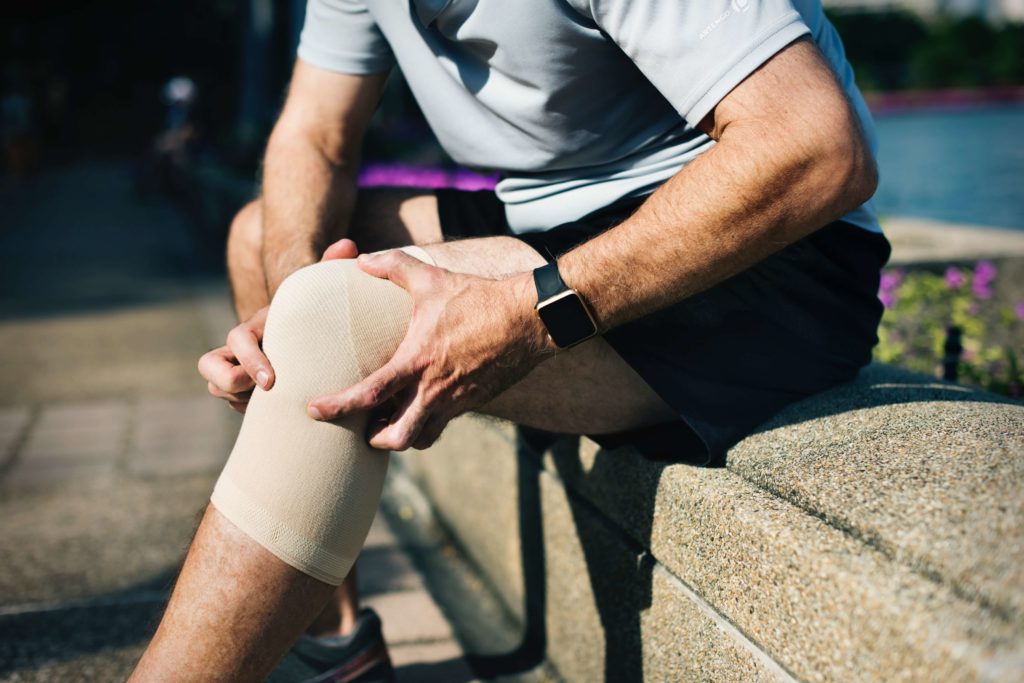Knee pain is a common problem. The location of the pain, as well as what activities aggravate the knee pain are very important in proper diagnosis and treatment of the pain you are experiencing.
Not only can knee pain affect your ability to walk, run, or carry out your usual activities. Knee pain can also really affect your sleep. There may be general aches, leg pain with movements, restricted movements, swelling, sharp pain etc.
So let’s talk about some of the more common causes of pain by location
Back of the Knee pain
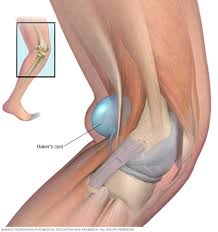
Bakers Cysts
Swelling that develops in the popliteal bursa at the back of the knee. This is one of the most common causes of pain behind the knee.
What are the symptoms of a bakers cyst? Small bulge (like a water balloon) behind the knee, tightness and pain behind the leg, pain while walking and kneeling.
Knee Sprain
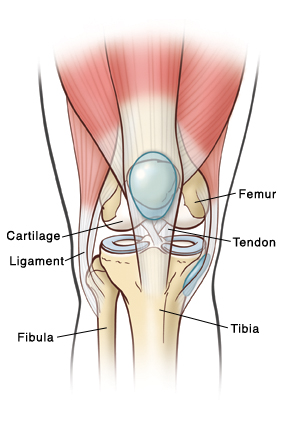
Knee sprains happen commonly form over stretching one or more of the ligaments or tendons, which can result in a full or partial tear of the tissue.
What are the symptoms of a knee sprain? pain, swelling, bruising, decreased knee movement, pain with passive movements.
Posterior Meniscal Tear
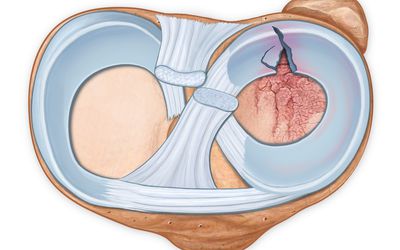
A tear in the meniscus cartilage at the back of the knee. Causes are sudden twisting, a force through the knee or a gradual wear and tear type of injury.
What are the symptoms of a posterior meniscal tear? swelling, locking, pain behind the knee with extension, pain with walking, running, squatting & going up stairs.
Deep Vein Thrombosis (DVT)
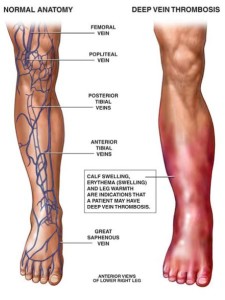
A DVT is a blood clot in the deep leg veins. If it breaks off it can lead to a heart attack or stroke. Causes are prolonged inactivity, certain medications, pregnancy, obesity, and genetics.
What are the Symptoms of a DVT? Pain behind the knee or in the calf, swelling, redness, warmth usually only in one leg.
Warning! A DVT is a potentially life-threatening condition. If you are showing symptoms or suspect you might have a DVT seek immediate medical attention.
Hamstring Injury
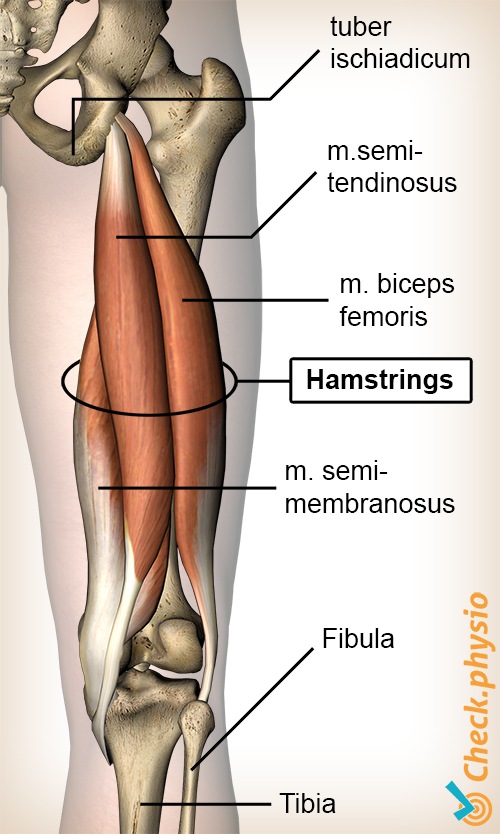
Overstretching the hamstring muscles can cause pain in the back of the knee. It may also tear the muscles. Causes can be sudden and fast movements such as springing, lunging and jumping.
What are the symptoms of hamstring injury? aching behind the knee or thigh, sharp pain behind the knee. Worse when bending the knee or with acceleration of deceleration movements.
Front of the knee
Runners Knee
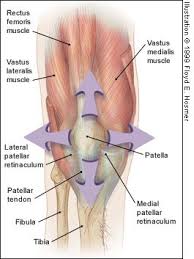
This is the most common cause of knee pain from running the diagnosis that is most commonly associated with this is patellofemoral pain syndrome. The problem is that the patella is having problems with its tracking. Most commonly the patella tracks laterally.
What are the symptoms of “Runners Knee”? Gradual onset and come and go depending on your activities. It can feel sharp at times, dull ache, Stabbing, Burning all worse with movements.
Iliotibial Band Syndrome (ITB Syndrome)
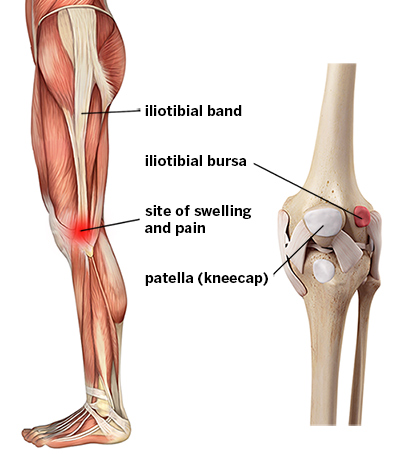
One of the most common causes of lateral (outside) knee pain. Usually due to tightness, friction and inflammation of the IT band, which is a thick band of connective tissue on the outside of the thigh.
What are the symptoms of Iliotibial band syndrome? Lateral knee pain on the outer side of the knee that radiates up the thigh.
Jumpers Knee
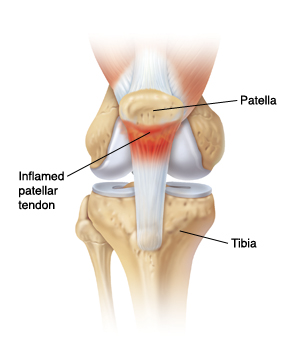
This is the common name for infrapatellar tendonitis. Which is tiny tears and resulting inflammation of the infrapatellar tendon from overuse. The infrapatellar tendon sits below the patella as the name suggest.
What are the symptoms of infrapatellar tendonitis? the area just below the patella “knee cap”, stiffness and knee pain after running, jumping and other ballistic activities.
Knee Bursitis
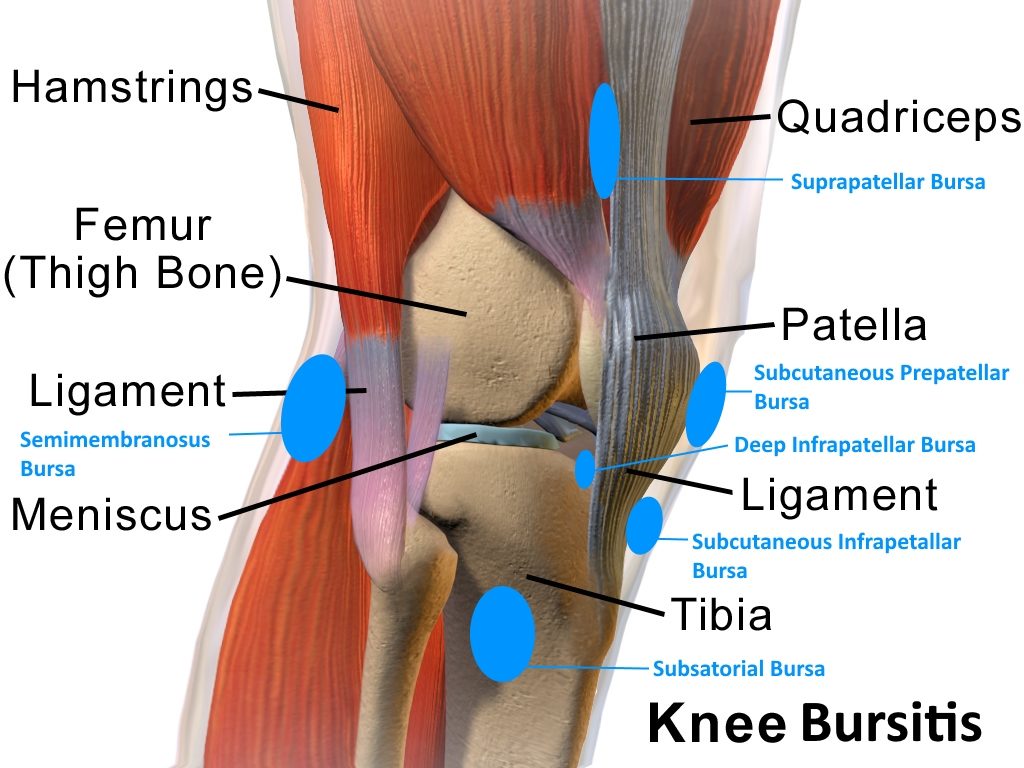
Around the knee there are a number of bursa, which are small fluid filled sacs that sit between tendons and boney spots to prevent friction. these can get irritated from repetitive actions, which leads to inflammation and pain.
What are the symptoms of knee bursitis? The symptoms are varied depending on which bursa is affected. Typically they include pain swelling, redness and limited knee range of motion.
What Treatments are there?
Chiropractic
Chiropractic care is a great non-surgical avenue to pursue to knee pain. As musculoskeletal specialists, chiropractors have great results with treating this type of conditions. Through the use of chiropractic adjustments, massage therapy or muscle work, deep tissue laser therapy and therapeutic exercises we are able to greatly reduce and in some cases eliminate the symptoms.
Acupuncture
Acupuncture is another great option that is used to treat sciatic pain. The goal with acupuncture is to calm the central nervous system as well and release tension in the muscles surrounding the spine. Acupuncturists seek to balance the flow of energy pathways in the body through pathways called meridians and reduce inflammation which is can aggravate many conditions.
Physical therapy
Physical therapy helps to reduce pain through specific exercises to stabilize the knee, hip and ankle and increase function. Here in the office we use rehabilitation exercises to help fix the issues so you can get back to having fun. If we do not have the tools to get you better we have the contacts that do.
Steroid injections
Steroid injections can be beneficial for short term reduction in pain when it comes to sciatic pain. This can be expensive and is not a good long term option as their are increased risks associated with multiple injections with steroids.
Activity modification
Activity modification is another way to reduce pain as well as stay out of pain. In modern day society in general we do not move as much as we should. Making simple changes throughout our day can make huge differences. Research suggests that we should be taking micro breaks through our day so that we are not in one position too long. This can be as simple as standing up and walking around our desk at work or shifting the hips side to side and forward and back while driving in the car.
We at Vector Spine and Sport are committed to helping you get feeling better and fixing the issue if we are able to. If you have questions or concerns please contact us at (801) 456-0352.
